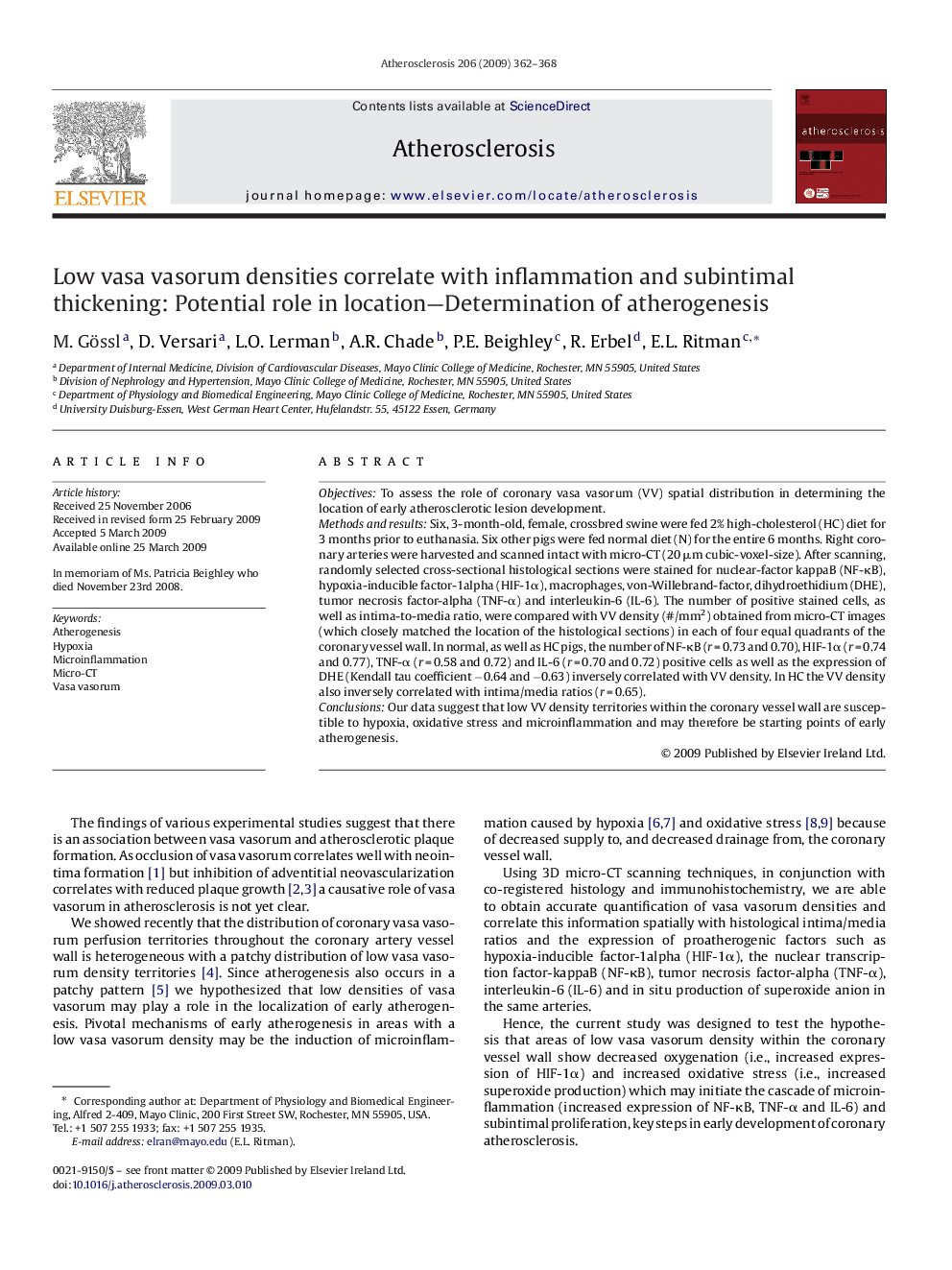| Article ID | Journal | Published Year | Pages | File Type |
|---|---|---|---|---|
| 2893416 | Atherosclerosis | 2009 | 7 Pages |
ObjectivesTo assess the role of coronary vasa vasorum (VV) spatial distribution in determining the location of early atherosclerotic lesion development.Methods and resultsSix, 3-month-old, female, crossbred swine were fed 2% high-cholesterol (HC) diet for 3 months prior to euthanasia. Six other pigs were fed normal diet (N) for the entire 6 months. Right coronary arteries were harvested and scanned intact with micro-CT (20 μm cubic-voxel-size). After scanning, randomly selected cross-sectional histological sections were stained for nuclear-factor kappaB (NF-κB), hypoxia-inducible factor-1alpha (HIF-1α), macrophages, von-Willebrand-factor, dihydroethidium (DHE), tumor necrosis factor-alpha (TNF-α) and interleukin-6 (IL-6). The number of positive stained cells, as well as intima-to-media ratio, were compared with VV density (#/mm2) obtained from micro-CT images (which closely matched the location of the histological sections) in each of four equal quadrants of the coronary vessel wall. In normal, as well as HC pigs, the number of NF-κB (r = 0.73 and 0.70), HIF-1α (r = 0.74 and 0.77), TNF-α (r = 0.58 and 0.72) and IL-6 (r = 0.70 and 0.72) positive cells as well as the expression of DHE (Kendall tau coefficient −0.64 and −0.63) inversely correlated with VV density. In HC the VV density also inversely correlated with intima/media ratios (r = 0.65).ConclusionsOur data suggest that low VV density territories within the coronary vessel wall are susceptible to hypoxia, oxidative stress and microinflammation and may therefore be starting points of early atherogenesis.
